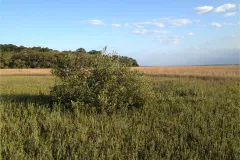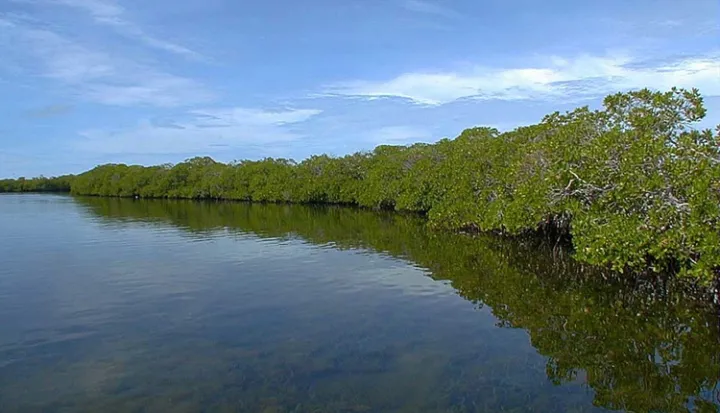Finding Mangroves In Unexpected Places

Over the past several decades, Florida’s coastal wetlands have been changing. Along the eastern shore, researchers have seen small mangrove trees appearing in areas further north than they usually occur, in places that historically have been salt marsh. So why are these mangrove trees popping up in unexpected places?
In order to figure out why this is happening, we first have to figure out exactly where it is happening. This is easier said than done. Florida has hundreds of thousands of acres of coastal wetlands, and it would take an enormous amount of time to survey all of those wetlands on the ground. To avoid having to track and count new mangroves by hand, we harnessed the power of satellite imagery to track these changes. With the help of researchers from the Smithsonian Environmental Research Center, University of Maryland, and Brown University, I used 28 years of images from an incredible satellite called Landsat 5 to monitor changes in mangrove cover from 1984 to 2011.
We found that mangrove cover has not been increasing all over the state. Instead, mangroves appear to be expanding the most in the northern part of their range, particularly in the areas north of Cape Canaveral. In these regions, the area covered by mangroves has doubled over the past 3 decades. Mangroves also have been moving farther north than we’ve ever seen them before.
Mangroves are tropical trees and they do not handle cold temperatures very well—a single frost can kill them. So their northward migration could be explained by warming temperatures, which allow areas that are historically colder to remain frost-free all year. We inspected climate data from a series of weather stations in Florida and found that temperatures have indeed increased along the coast over the past 30 years. However, the expansion of mangroves did not match patterns of increased average temperatures. Instead, the largest increases in mangrove area occurred in regions that experienced fewer extremely cold nights (when the temperature dipped below 25 degrees F) during the past 30 years.
The interesting thing is that these temperature changes were small, just one fewer freeze event per year on average, but they appear to have helped cause these large increases in mangrove area. This type of large ecological change resulting from a small environmental change is what is known as a threshold response. The response suggests that even small temperature increases in the future might push other areas past similar thresholds, and allow for further expansion of mangroves.
Mangroves are very important ecosystems, and an estimated 35 percent of the world’s mangrove forests have been destroyed since 1980. So this mangrove expansion is good news, right? Not necessarily. The mangroves are replacing salt marsh, which is also threatened by things such as coastal development and increasing sea levels. In Florida, both mangrove forests and salt marshes form productive and diverse ecosystems that support a wide variety of fish, invertebrates, birds, and marine mammals, with mangroves typically to the south of Daytona Beach and salt marshes to the north. So there are a lot of unanswered questions about what the northward march of mangroves might mean for the functioning of Florida’s coastal wetlands. I’m hoping to answer some of them.


